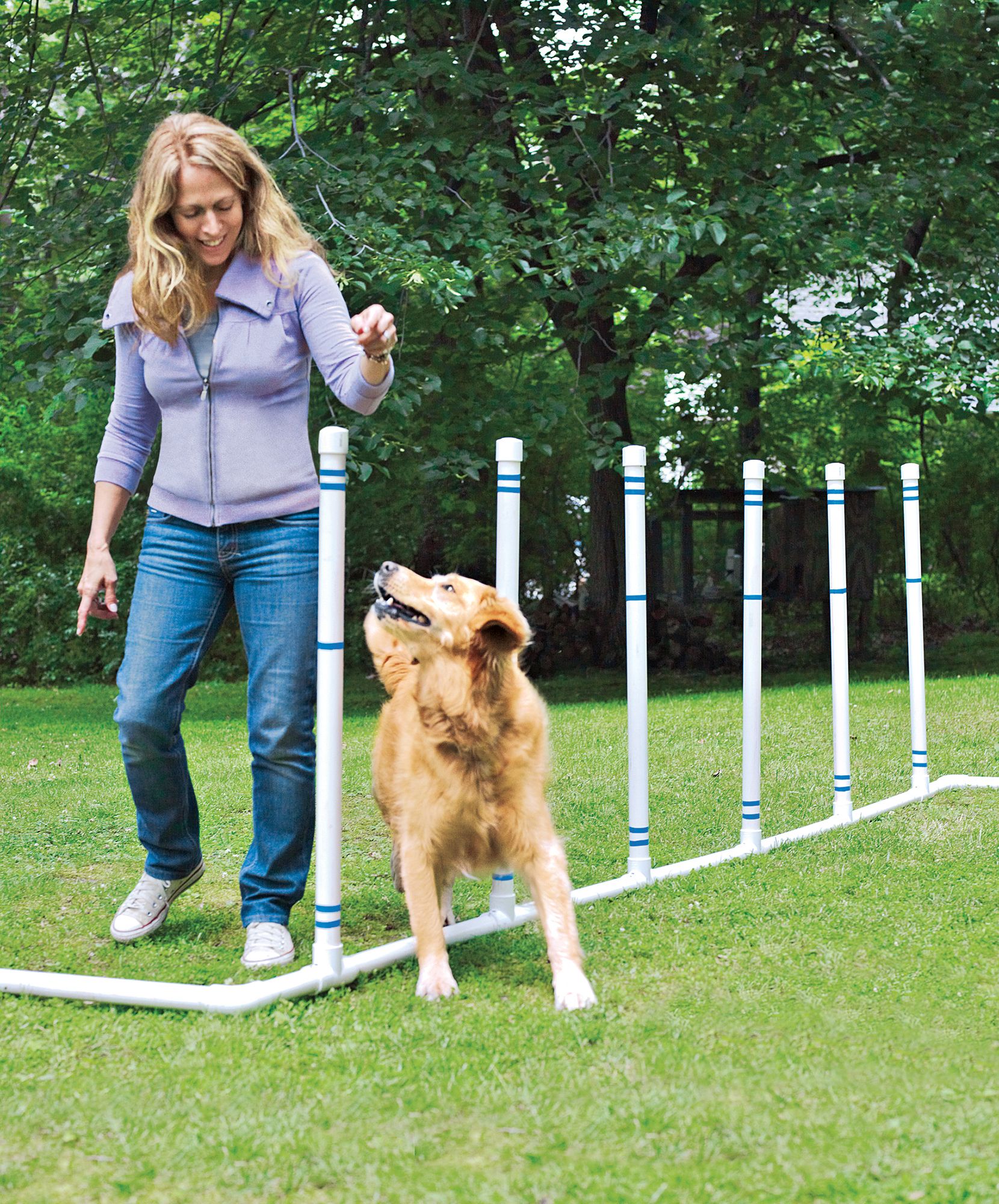Building a dog agility course in your backyard is a great way to bond with your canine companion while providing physical and mental stimulation. The course can provide a workout that’s good for your dog’s health, behavior, and lifespan. “Active dogs tend to keep fluid in their joints longer, which lessens the effects of aging,” says Carrie DeYoung of the American Kennel Club.
In this guide, we’ll walk you through how to plan, build, and use a home agility course that will keep your furry friend active and engaged.
Planning Your DIY Dog Agility Course
Before you start building, plan your agility course carefully. Consider the available space in your yard and the types of obstacles you want to include.
Assessing Your Available Space
Measure the area where you plan to set up your agility course. Check that you have enough room for your dog to move freely between obstacles. If space is limited, focus on versatile equipment that you can easily rearrange or store when not in use. For larger yards, you can build an outdoor dog bed near the course for rest breaks.
Choosing the Right Equipment
Select equipment that suits your dog’s size, age, and fitness level. Start with basic obstacles like jump bars, weave poles, and a teeter-totter. As your dog progresses, you can add more challenging elements to the course.
Consider your dog’s breed characteristics when choosing equipment. For example, breeds prone to hip problems may benefit from specific exercises.
Equipment for a Dog Agility Course
An agility course typically includes several key pieces of equipment. Here’s an overview of the obstacles you’ll want to include:
- Agility jump bars: A fundamental component of any agility course. They help your dog build strength in its hindquarters and improve its sense of spatial awareness. You can adjust the jump bars to different heights to increase the difficulty as your dog gradually becomes more proficient.
- Teeter-totter: The teeter-totter, also known as a seesaw, tests your dog’s balance and confidence. This obstacle requires your dog to walk up one end of a plank, causing it to tip and lower on the opposite side. It’s an excellent tool for teaching your dog to follow commands and trust your guidance.
- Weave poles: Weave poles challenge your dog’s agility and coordination. This obstacle consists of a series of upright poles that your dog must navigate by weaving in and out. A good approach is to start with three poles and gradually increase to six or more as your dog improves.
Recommended Tools
Here’s what you should have on hand to build your course.
 Pull saw
Pull saw Drill/driver
Drill/driver 1/16-inch drill bit
1/16-inch drill bit 3/8-inch drill bit
3/8-inch drill bit 5/8-inch spade bit
5/8-inch spade bit Combination square
Combination square Hammer
Hammer Wood block
Wood block
Project Cut List
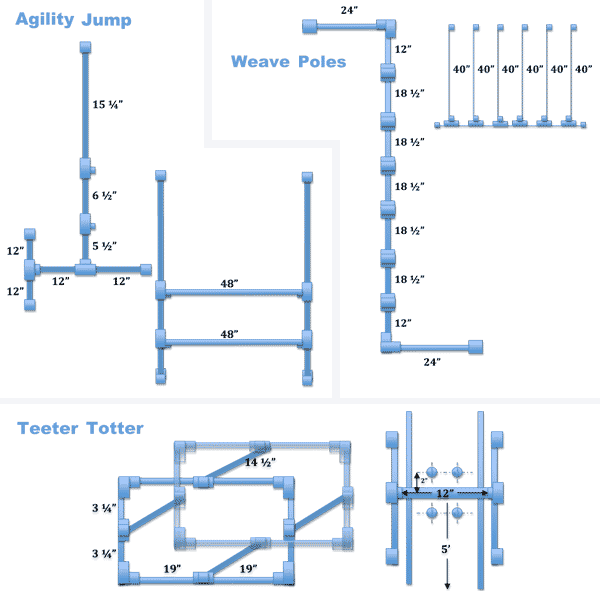
First, clean the printing off the pipes using clear PVC cleaner. This step is optional, but it makes the final piece look more professional. Mark each section of pipe to length using the cut list below, then cut all the sections using a pull saw. Write the length of each section at the end of the pipe where a connector or end cap will later cover the marking.
All of the below are 1 1/2-inch pipe unless otherwise noted.
Agility Jump
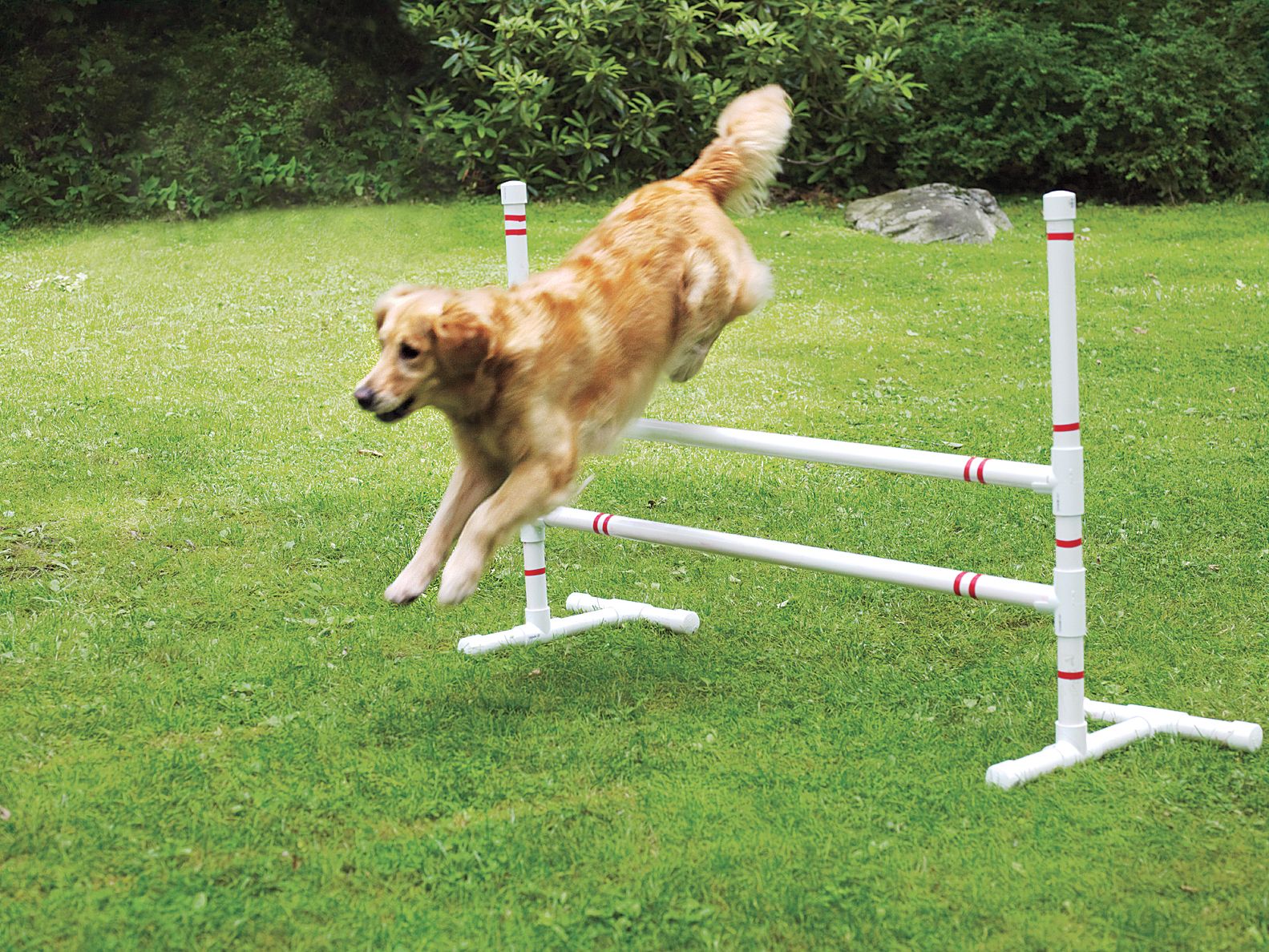
- Eight 12-inch pieces
- Two 48-inch pieces
- Two 5 1/2-inch pieces
- Two 6 1/2-inch pieces
- Two 15 1/4-inch pieces
Weave Poles
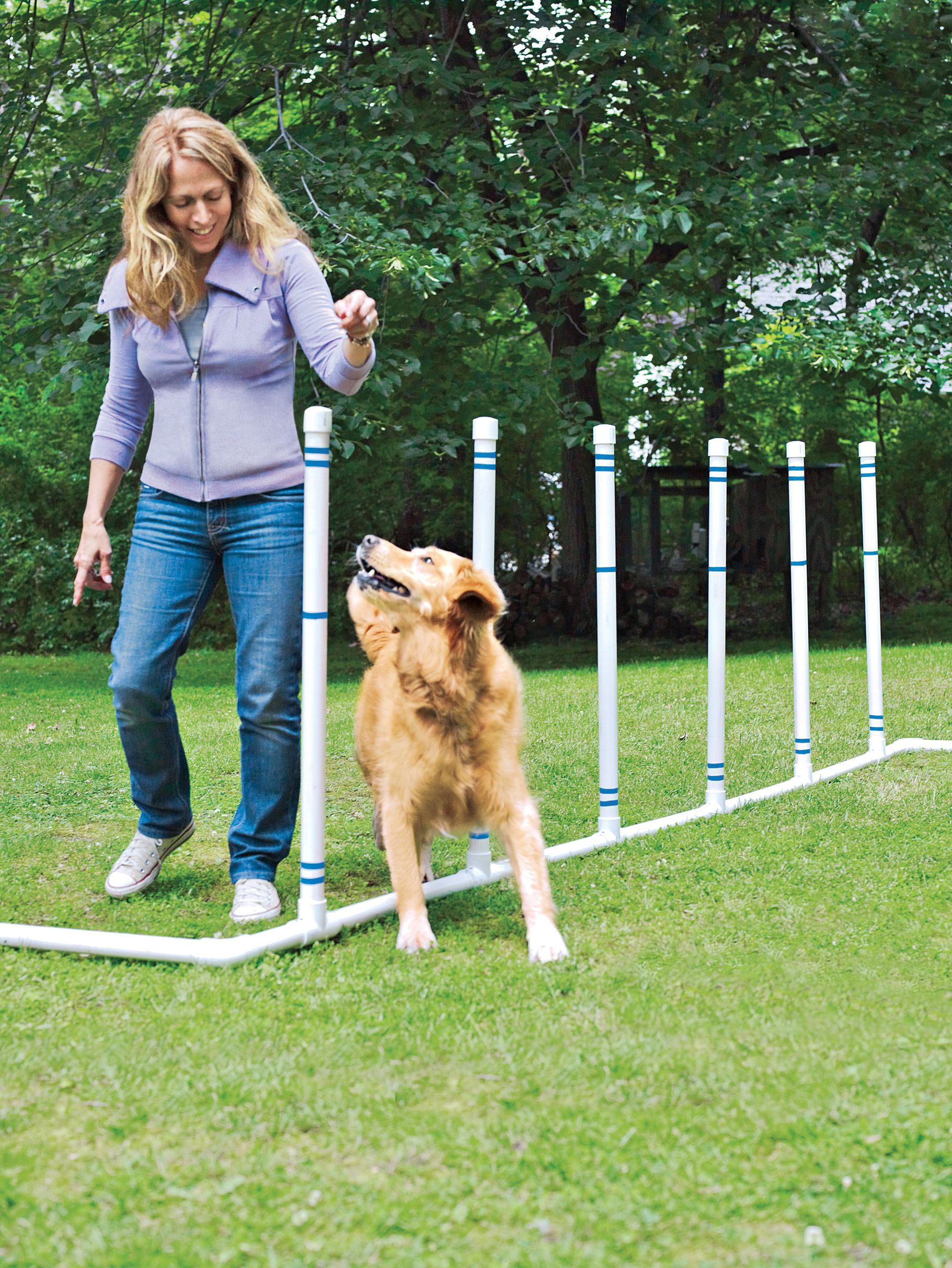
- Four 18 1/2-inch pieces
- Two 12-inch pieces
- Two 24-inch pieces
- Six 40-inch pieces
Teeter-Totter
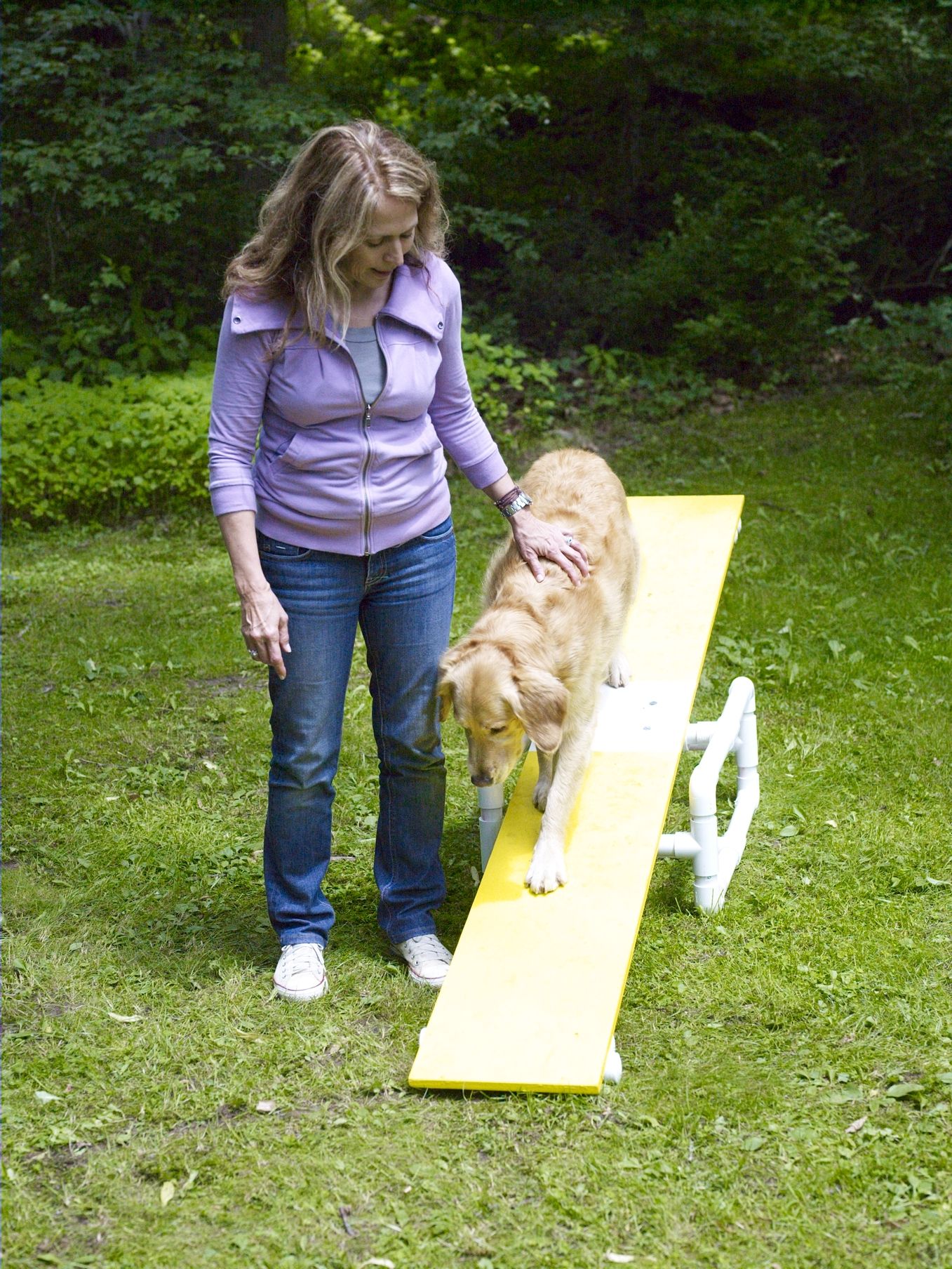
- Eight 3 1/4-inch pieces
- Eight 19-inch pieces
- Four 14 1/2-inch pieces
- Four 12-inch pieces
- One 12-inch piece (2-inch pipe)
Download all the plans for this DIY dog agility course here.
Step-by-Step Guide To Building Agility Equipment
Now that you understand the basic components of an agility course, let’s dive into the construction process for each piece of equipment.
1. Constructing the Jump Bars
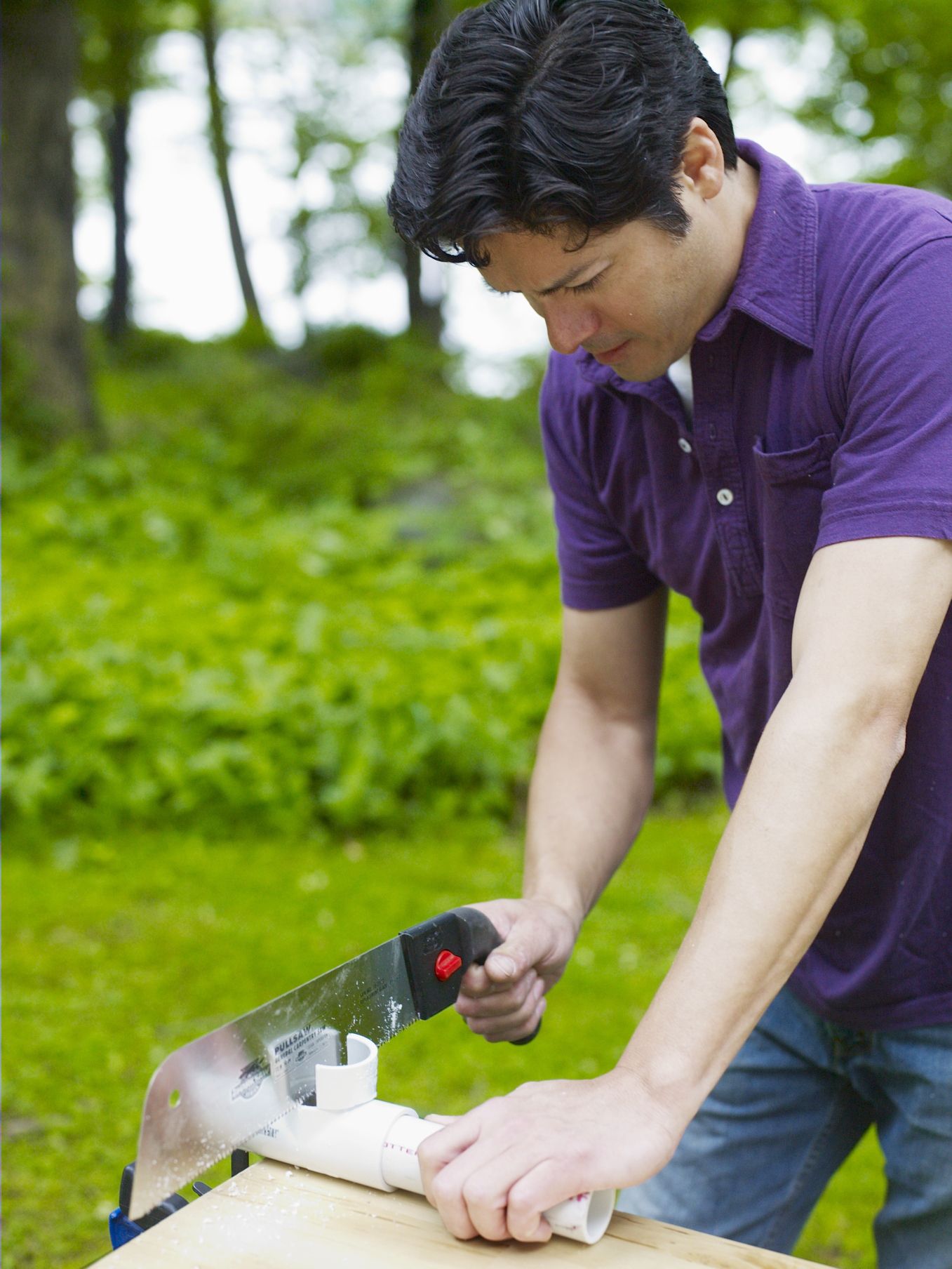
To create the cups on which the ends of the jump bars rest, mark four tees at the center outlet on one side of the middle line.
Insert a scrap piece of pipe in one end of the tee to hold on to, and clamp the other end of the tee to a work surface.
Cut the line using a pull saw, then turn the tee and cut parallel to it to remove the larger side of the center outlet. The leftover cup will hold the jump bars in place while allowing them to dislodge easily so that your dog can’t be injured.
2. Assembling the Jump
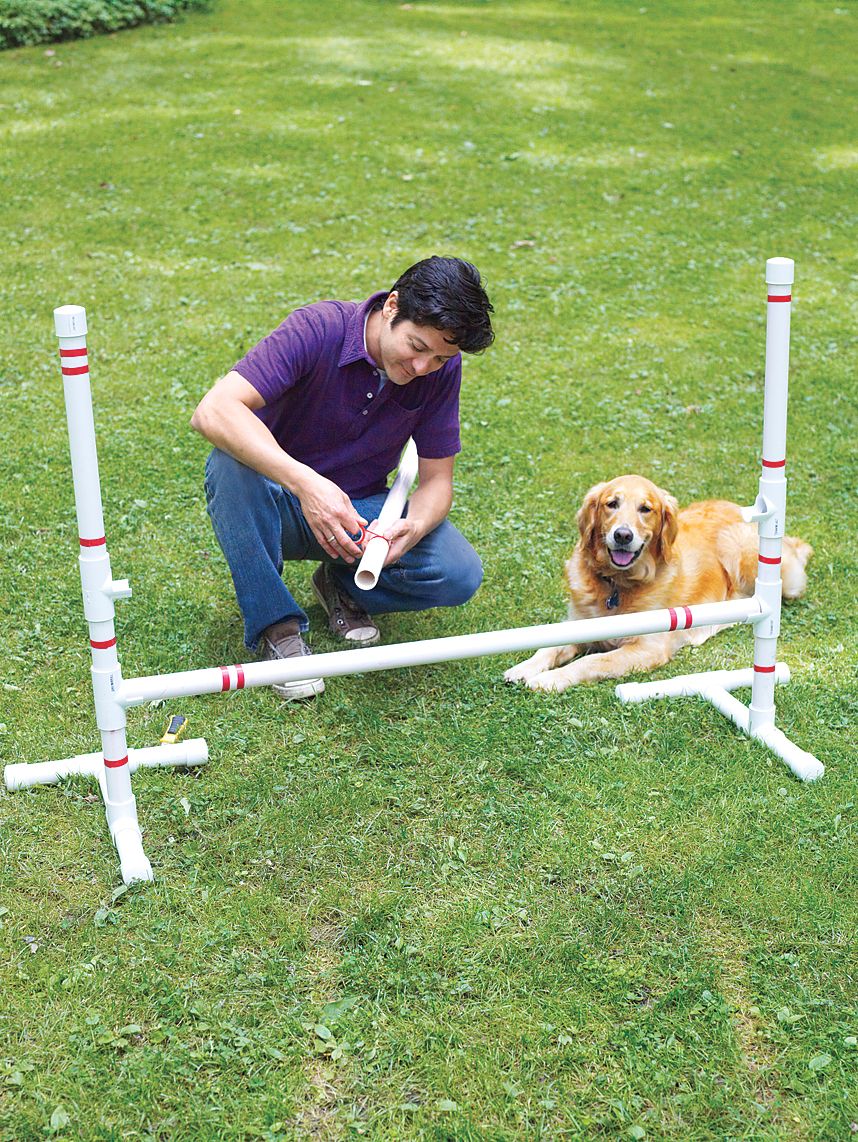
Assemble one side of the jump in this order: tee, 5 1/2-inch pipe, cut tee, 6 1/2-inch pipe, cut tee, 15 1/4-inch pipe, and end cap.
Using a block and a hammer, push each connection together until the pipe rests against the shoulder inside the connectors. The center of each cup should sit 8 inches or 16 inches from the ground.
To hold the sides upright, insert a 12-inch pipe into each outlet of the bottom tee; fit one with an end cap and one with another tee. Push two 12-inch pipes fitted with end caps into the base tee to steady the assembly.
Then assemble the second side. Connect the two sides by resting a 48-inch pipe between them. Wrap four strips of red tape around each jump bar and several around each side to increase the jump’s visibility.
3. Connecting the Weave Pole Base Pieces
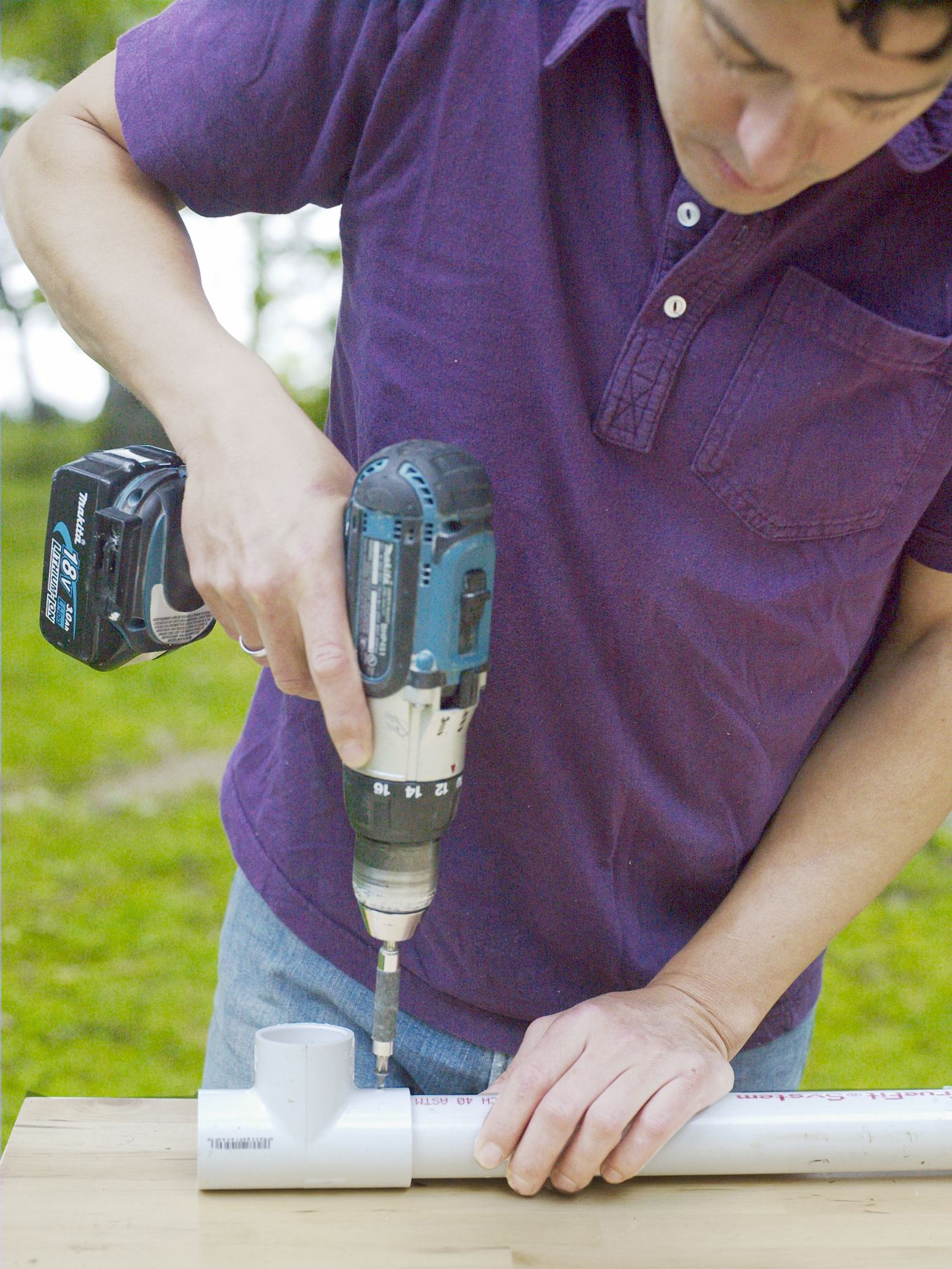
To be sure the base pieces for the weave polls won’t spin, first connect each 18 1/2-inch piece to the side of a tee. Tap the pipes tight into the tees using a block and a hammer. Drill a hole through the tee into the pipe using a drill/driver fitted with a 1/16-inch bit. Finally, connect the two with a 1-inch set screw.
4. Aligning the Poles
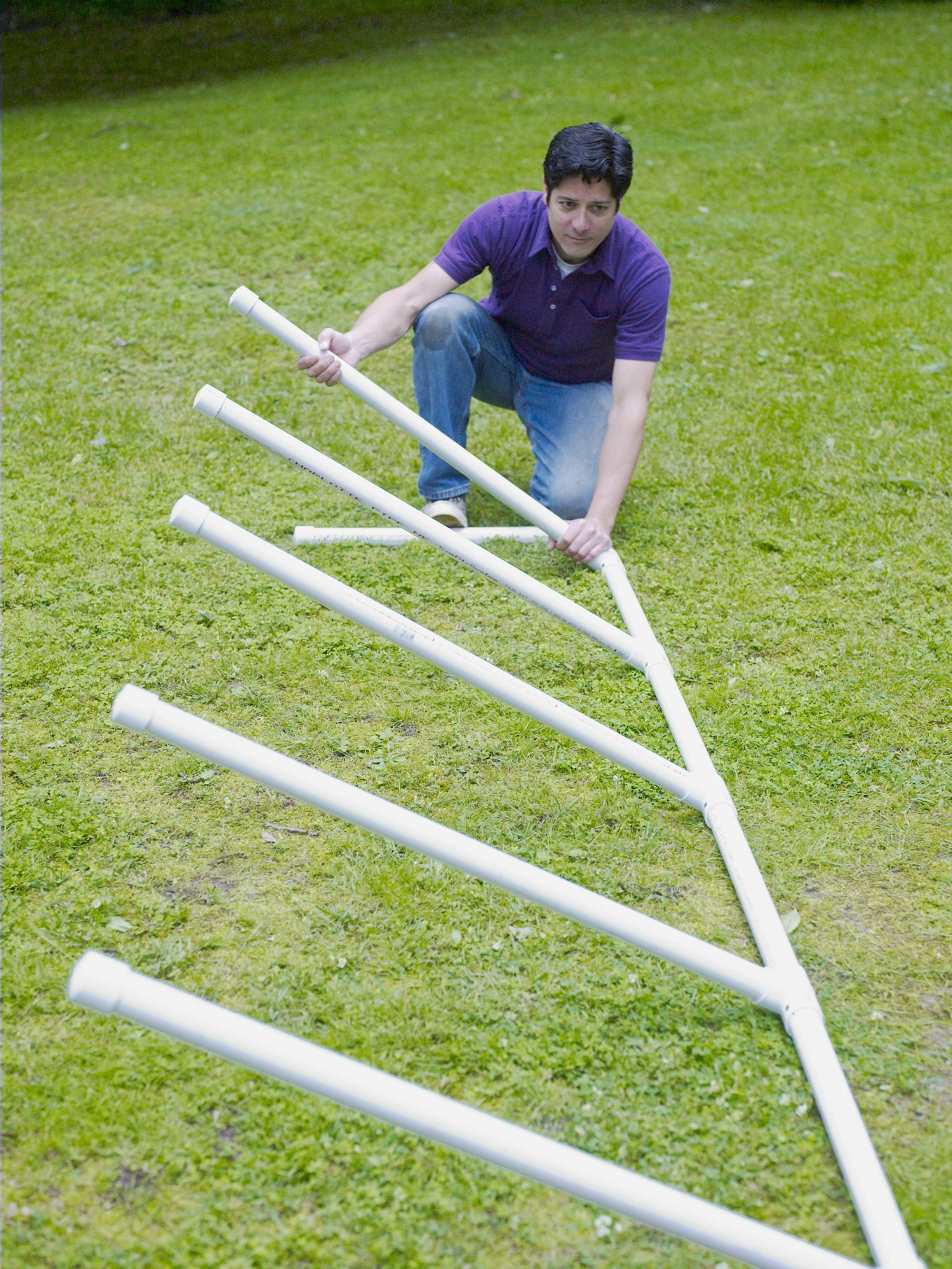
Attach the tee-pipe pairs to create one long line. Insert a 12-inch pipe into the tees on either end of the run and fit each with an elbow, a 24-inch pipe, and an end cap. Insert a 40-inch pipe fitted with an end cap into each of the six tees.
Lay the entire row on its side on a flat surface to keep all the tee outlets parallel. Mark a line that crosses in between each tee and pipe between the uprights so that you can keep them lined up the right way when you put the screw in. Using a drill/driver, drill a hole at each connection, making sure the mark stays aligned. Secure these connections with 1-inch set screws.
5. Adding End Supports
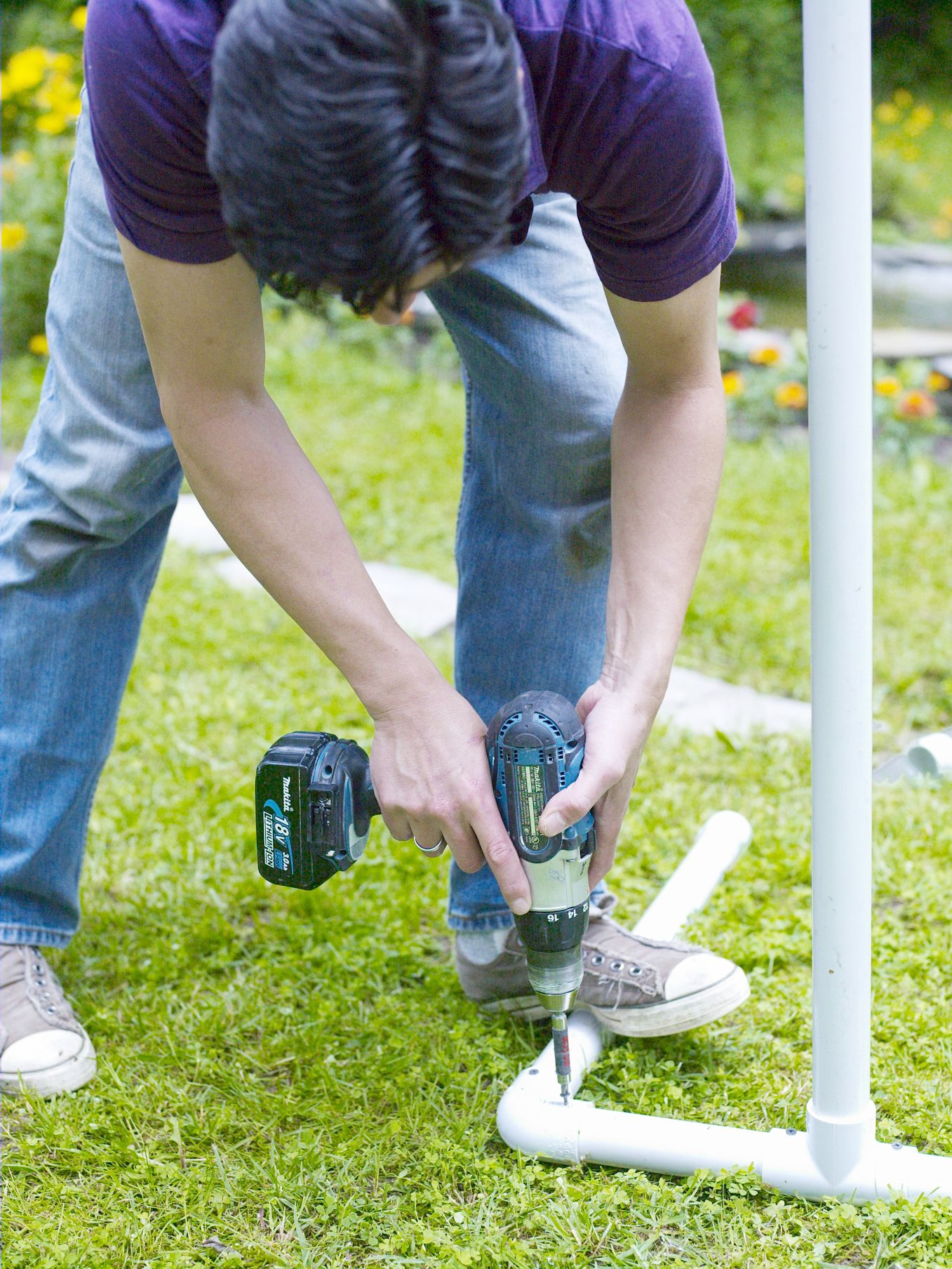
Straighten the polls vertically while pushing the legs at either end to opposite sides of the polls to create a large Z shape. When the weave polls are straight up and down, drill and sink a set screw through both ends of each elbow on either end of the polls. Wrap two strips of blue tape at the top and bottom of each weave poll and one strip in the center.
6. Finding the Teeter-Totter Plank Balance Point
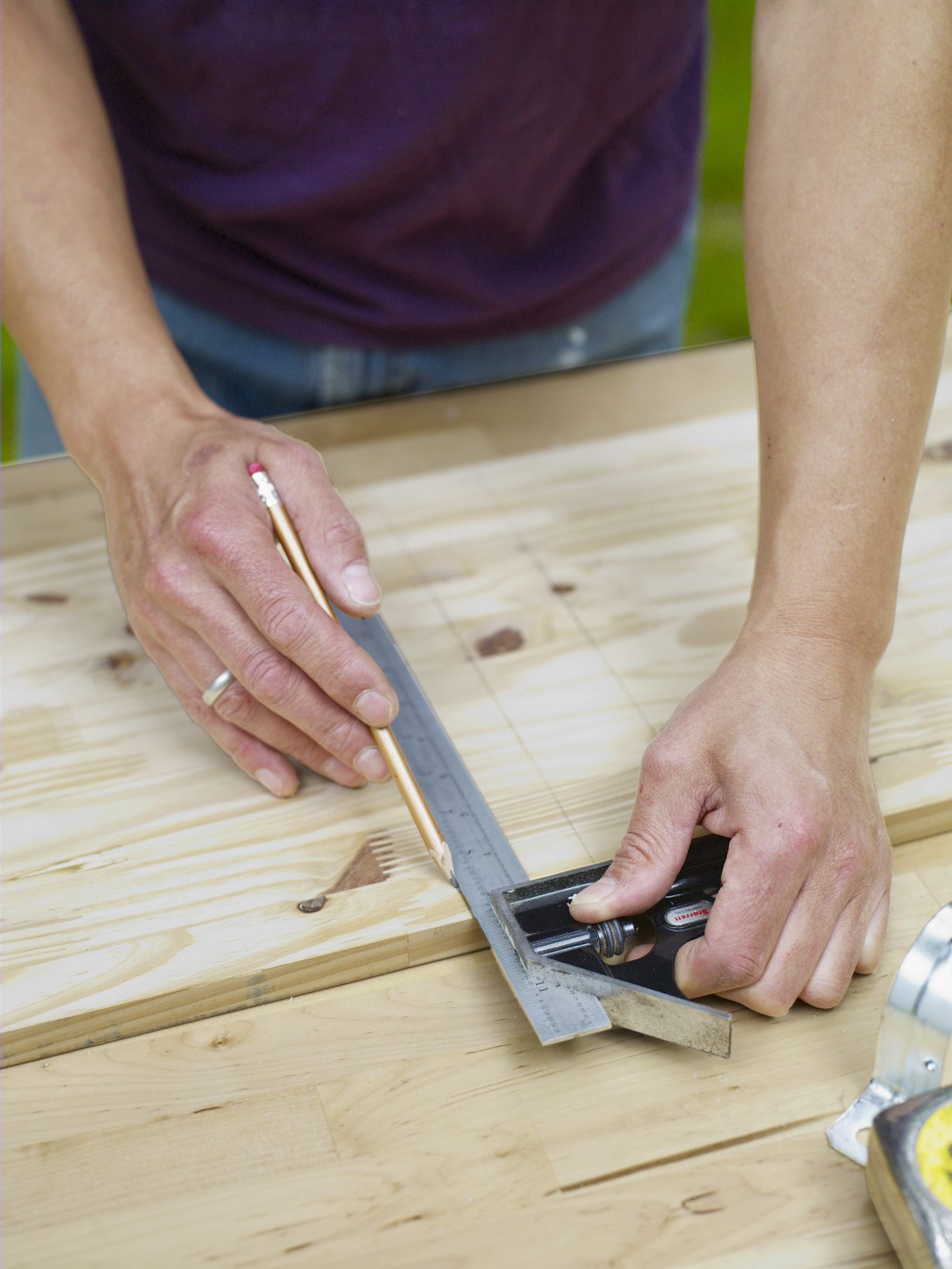
The teeter-totter requires a bit more detail than the previous two pieces. First, mark the tipping point of the teeter-totter at 5 feet along a 12-by-8-inch laminated shelving board. Positioning this fulcrum away from the entry side of the teeter-totter will slow the drop rate once the dog crosses it.
Mark two lines 2 inches from either side of the fulcrum. Mark each outside line at 3 and 9 inches from the edge, as shown above.
7. Drilling for the Center Spin Pipe
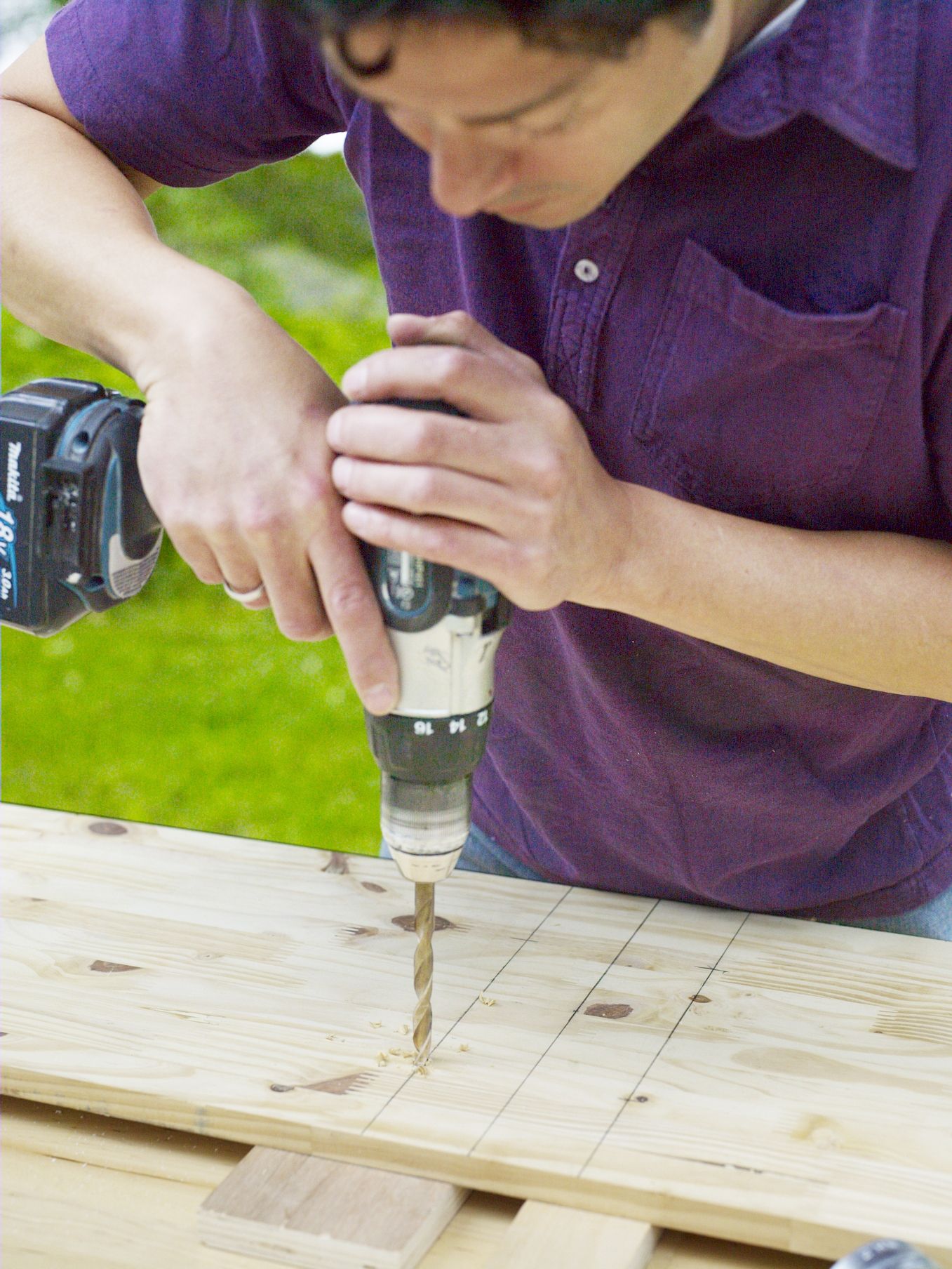
Dry-fit the holes of a 2-inch strap on the crosshairs you marked in step 6. To create space for the head of the bolt to sit flush with the top of the plank, remove the strap and drill one-quarter the depth of each hole using a drill/driver fitted with a 5/8-inch paddle bit. Drill the rest of each hole with a 3/8-inch bit.
8. Bolting on the Center Spin Pipe
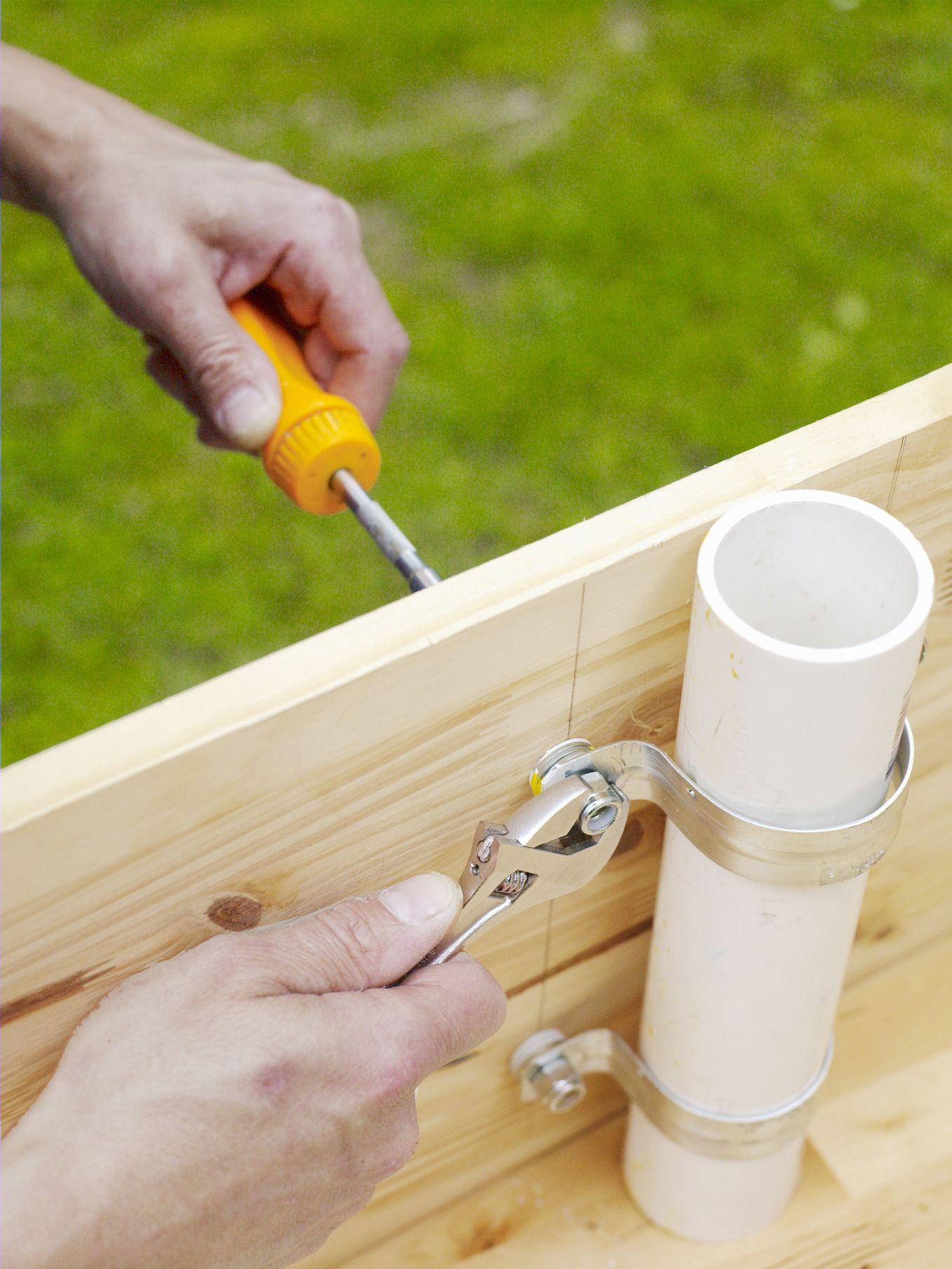
Set the 12-inch length of 2-inch PVC pipe inside the straps with their holes aligned with the holes in the board. Attach the pipe-strap assembly to the board using 3/8-inch flathead bolts.
Next, space the strap from the board with four washers at each bolt. Tighten a lock nut onto each bolt using a flathead screwdriver and an adjustable wrench.
9. Painting the Board
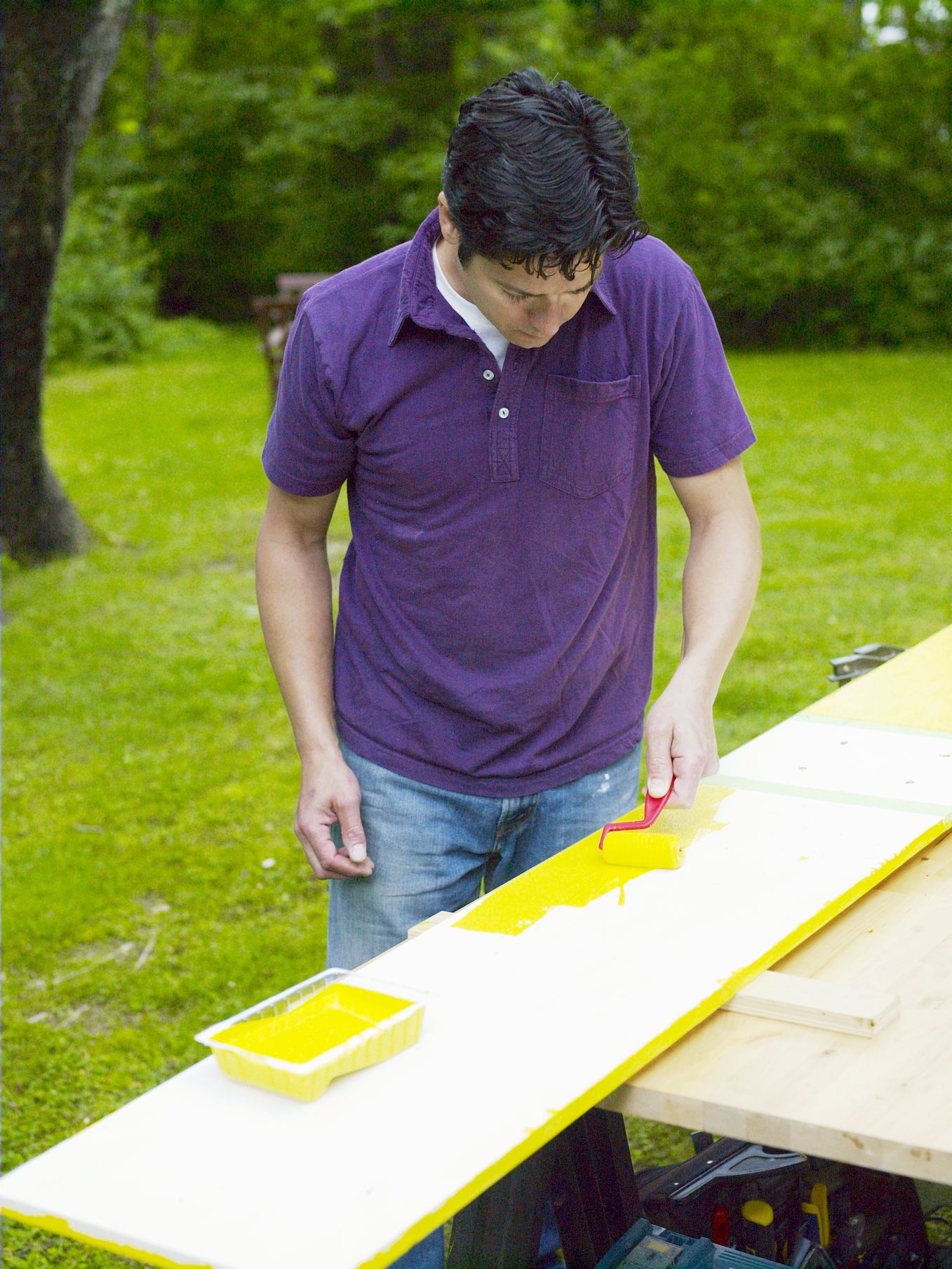
Now, you can paint the entire board with white primer. When the primer is dry, outline a 1-foot-wide area over the fulcrum with painter’s tape.
We painted the contact zones on either side of the board in yellow paint mixed with an anti-skid additive.
10. Attaching Balance Weights
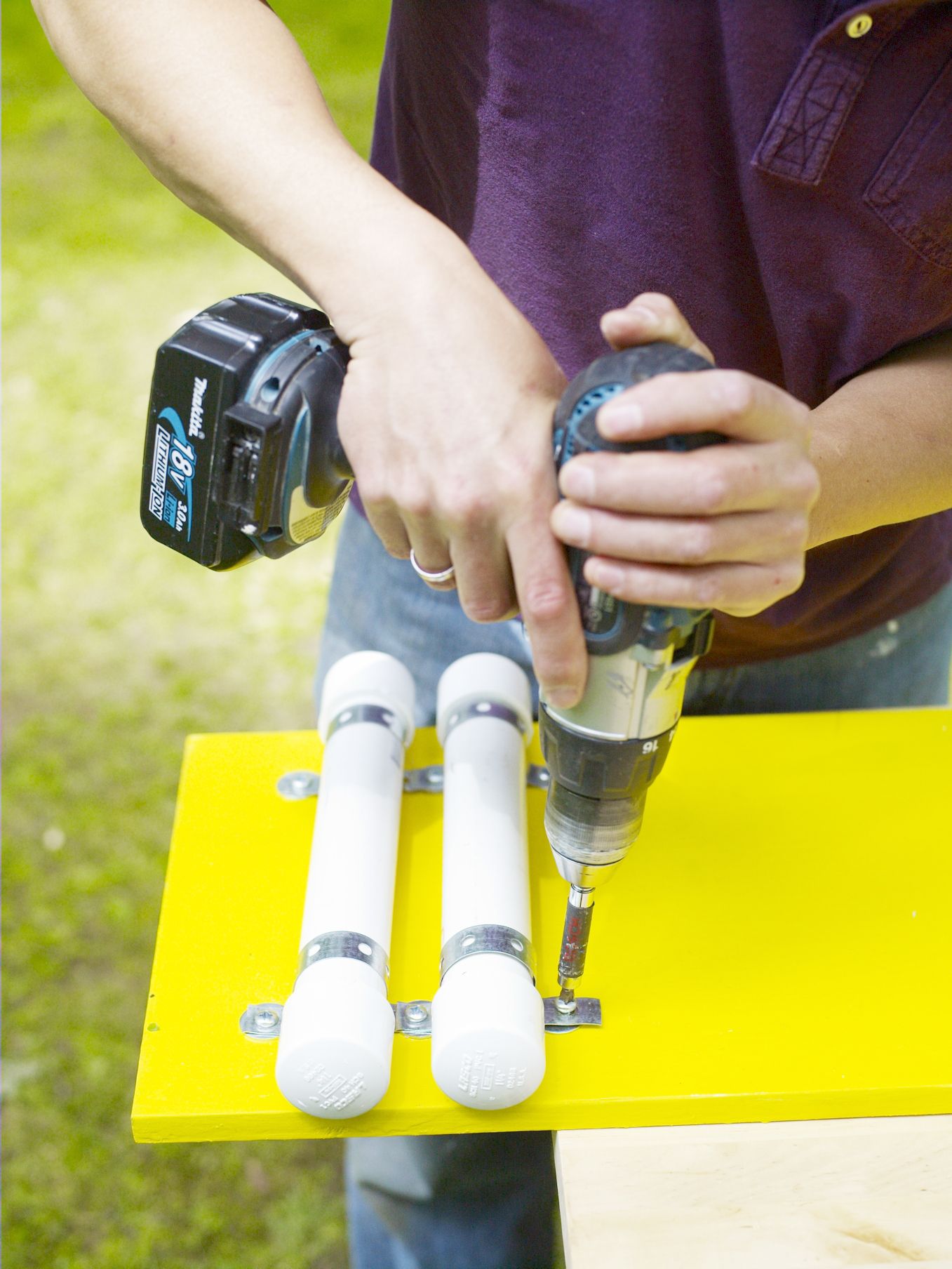
Use two weights to slow the descent of the board when your dog is on it. To make the weights, fill 12-inch lengths of pipes with gravel and cap both ends. Attach the weights as close to the end of the entry side as you can without raising the board off the ground. Secure the weights with metal strapping and 3/4-inch sheet metal screws.
11. Assembling the Teeter-Totter Base
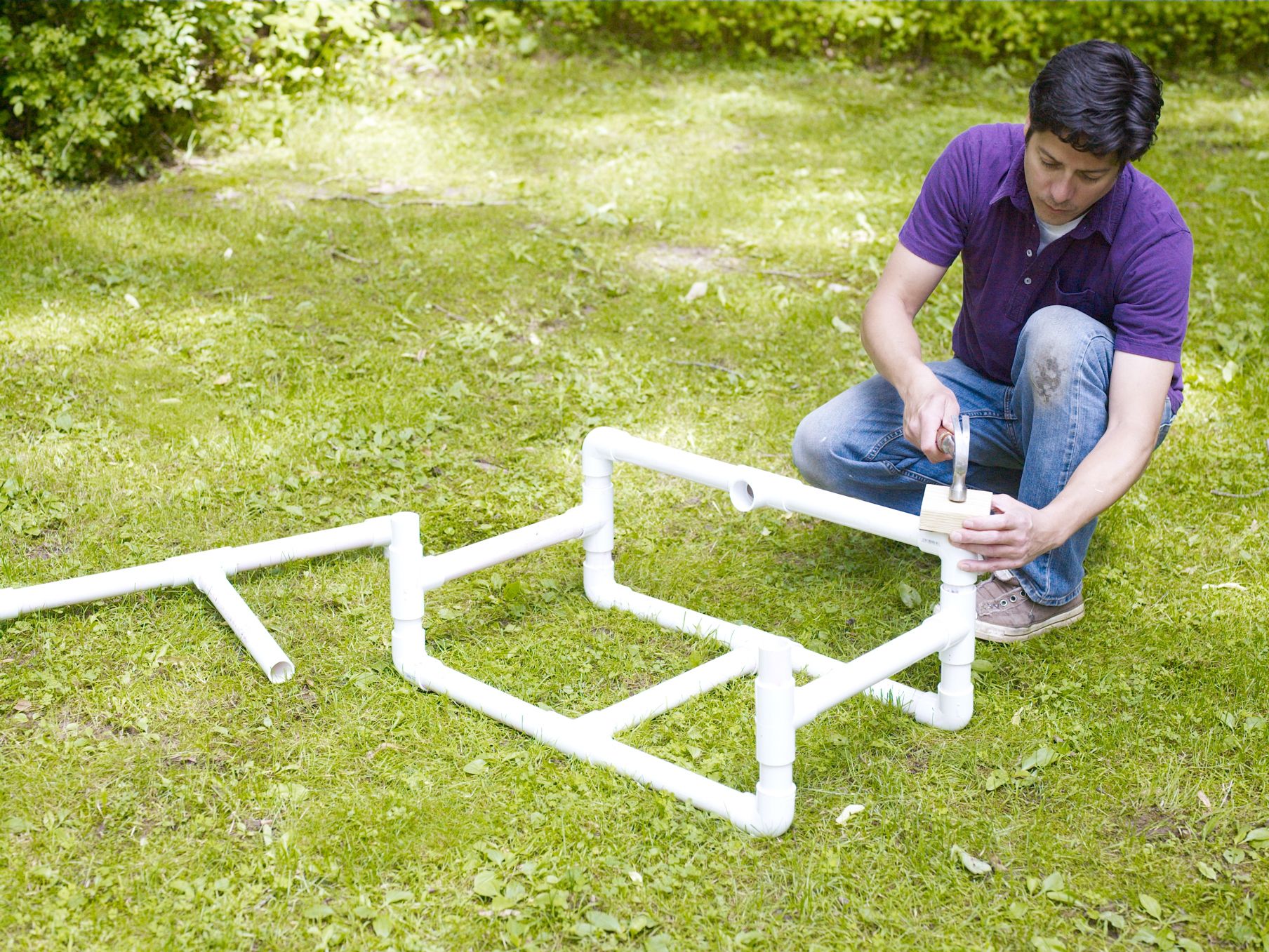
Make the teeter-totter base by creating two box-shaped sides connected by crosspieces. To build the bottom of the first side, push together an elbow, a 19-inch pipe, a tee, another 19-inch pipe, and another elbow. Repeat to build the top.
Connect the top and bottom by inserting a 3 1/4-inch pipe, a tee, and another 3 1/4-inch pipe between the elbow at each end of the top and bottom.
Build a second side, and install 14 1/2-inch pipes between the tees in the center of the bottom and sides of the frame sides.
Then set the frame fittings using a block and a hammer, but don’t tighten the top crosspiece and one corner. Wrap stripes of yellow tape around the base to make it easier for your dog to see.
12. Positioning the Plank on the Base
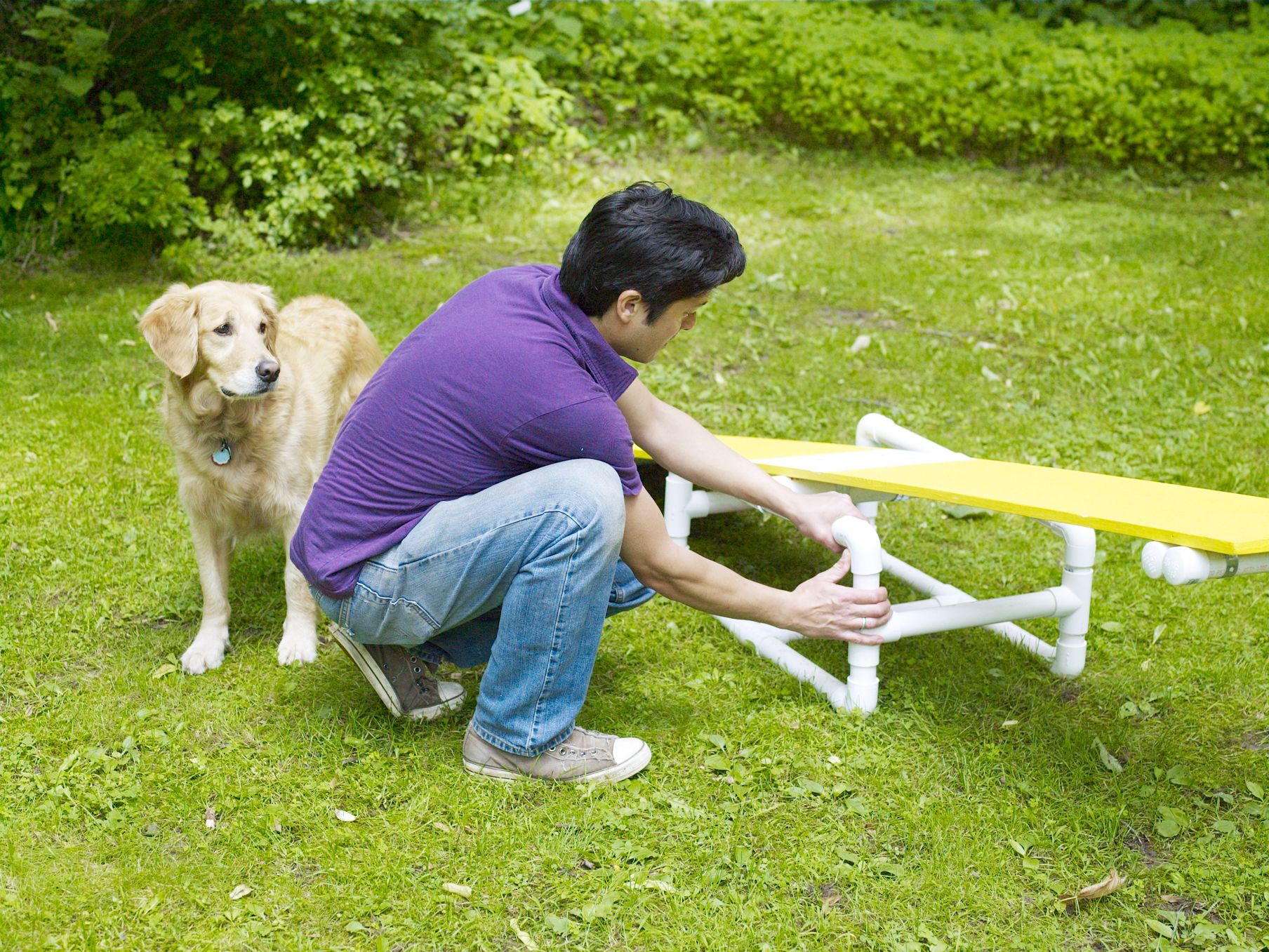
To finish the teeter-totter, slide the 2-inch pipe on the teeter-totter plank over the crosspiece. Connect the crosspiece and the last corner. Tap all frame connections until it’s secure.
Additional DIY Agility Equipment
Besides the primary equipment, adding a few extra obstacles can make the course more diverse and challenging for your dog. Here are a few ideas:
- A-frames: A-frames use two wide ramps joined at the top, forming an “A” shape. Your dog must climb up one side and go down the other, which helps in developing balance and strength. Make sure the surface is non-slip to prevent injuries.
- Pause tables: Pause tables are raised platforms where your dog must stop and hold a position, such as sitting or lying down, for a few seconds. This obstacle breaks the momentum of running through the course to reinforce control and obedience.
- Tunnels: Tunnels are long, collapsible tubes that dogs dash through. They are excellent for building speed and encouraging your dog to follow your lead through confined spaces. Begin with straight tunnels before leading up to to curved ones to increase difficulty.
